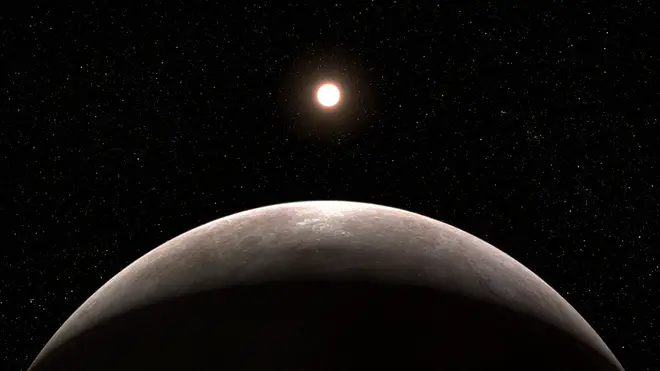
Matthew Wright 7am - 10am
12 January 2023, 08:29 | Updated: 12 January 2023, 08:52

Nasa's James Webb telescope has uncovered its first planet just 41 light-years away.
The rocky planet is almost exactly the same size as Earth, measuring at 99% of the diameter.
It is a few hundred degrees warmer and very close to its star, completing an orbit in just 2 days, Nasa said.
However, its red dwarf star is much cooler than our Sun, so it could still have an atmosphere.
Sharing the discovery, Nasa tweeted: "A whole new world! 41 light-years away is the small, rocky planet LHS 475 b."
Mark Clampin, astrophysics division director at the space agency's headquarters in Washington, said in a statement: "These first observational results from an Earth-size, rocky planet open the door to many future possibilities for studying rocky planet atmospheres with Webb.
"Webb is bringing us closer and closer to a new understanding of Earth-like worlds outside our solar system, and the mission is only just getting started."
LHS 475 b is relatively close, at only 41 light-years away, in the constellation Octans. We don’t yet know *if* it has an atmosphere, but @NASAWebb was already able to rule out a thick atmosphere. The telescope will study this planet this summer to tell us more! pic.twitter.com/eMZfQD5Jj3
— NASA Exoplanets (@NASAExoplanets) January 11, 2023
Scientists are now working to determine what the planet's atmosphere consists of, with some compositions, such as a pure carbon dioxide atmosphere, not being ruled out.
Nasa announced in November that it successfully revealed the makeup of an exoplanet's atmosphere in detail, suggesting it could help in search of alien life too.
Jacob Lustig-Yaeger, from the Johns Hopkins University Applied Physics Laboratory, said in a statement: "Counterintuitively, a 100 percent carbon dioxide atmosphere is so much more compact that it becomes very challenging to detect."
The findings have opened the possibility of pinpointing more Earth-sized planets orbiting smaller red dwarf stars.
"This rocky planet confirmation highlights the precision of the mission's instruments," Kevin Stevenson, who co-led the research team with Mr Lustig-Yaeger, said.
"And it is only the first of many discoveries that it will make."